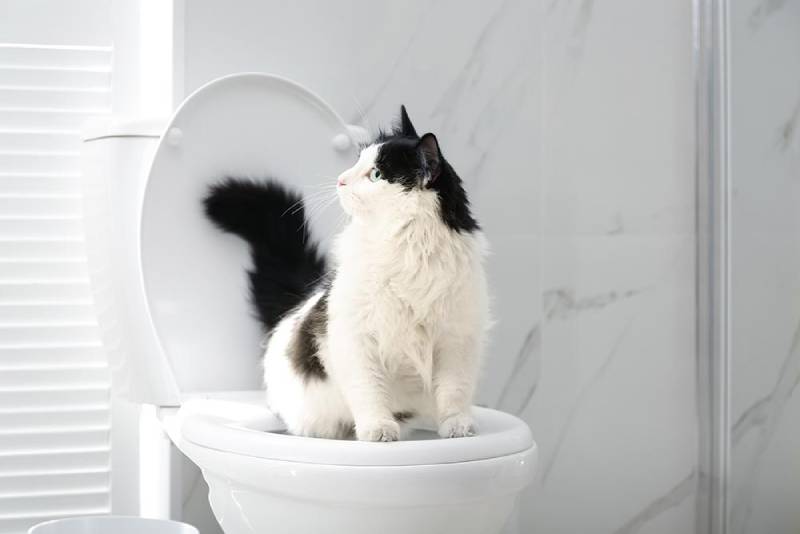Prevent Clogs and Damage: Never Flush Cat Poop Down Your Toilet - Professional Recommendations
Prevent Clogs and Damage: Never Flush Cat Poop Down Your Toilet - Professional Recommendations
Blog Article
We have encountered the article about Can You Flush Cat Poop Down The Toilet? below on the net and thought it made good sense to discuss it with you in this article.

Introduction
As pet cat proprietors, it's necessary to bear in mind how we dispose of our feline buddies' waste. While it may appear hassle-free to purge pet cat poop down the toilet, this practice can have damaging effects for both the setting and human health.
Environmental Impact
Purging pet cat poop presents unsafe pathogens and parasites into the water system, presenting a considerable risk to aquatic communities. These contaminants can negatively influence aquatic life and compromise water quality.
Health Risks
Along with ecological worries, flushing cat waste can also position wellness dangers to people. Cat feces might contain Toxoplasma gondii, a bloodsucker that can create toxoplasmosis-- a possibly serious health problem, particularly for pregnant women and people with damaged immune systems.
Alternatives to Flushing
The good news is, there are more secure and a lot more responsible ways to deal with pet cat poop. Think about the complying with alternatives:
1. Scoop and Dispose in Trash
One of the most typical method of disposing of pet cat poop is to scoop it into an eco-friendly bag and throw it in the trash. Make certain to utilize a dedicated clutter scoop and deal with the waste promptly.
2. Usage Biodegradable Litter
Select biodegradable feline litter made from products such as corn or wheat. These litters are eco-friendly and can be safely taken care of in the trash.
3. Hide in the Yard
If you have a yard, think about hiding feline waste in a marked location far from vegetable yards and water sources. Make sure to dig deep enough to avoid contamination of groundwater.
4. Mount a Pet Waste Disposal System
Purchase a pet waste disposal system especially developed for cat waste. These systems make use of enzymes to break down the waste, lowering odor and environmental effect.
Verdict
Responsible pet dog ownership expands beyond supplying food and sanctuary-- it also includes correct waste administration. By avoiding flushing feline poop down the bathroom and going with alternative disposal techniques, we can decrease our environmental footprint and shield human health.
Why Can’t I Flush Cat Poop?
It Spreads a Parasite
Cats are frequently infected with a parasite called toxoplasma gondii. The parasite causes an infection called toxoplasmosis. It is usually harmless to cats. The parasite only uses cat poop as a host for its eggs. Otherwise, the cat’s immune system usually keeps the infection at low enough levels to maintain its own health. But it does not stop the develop of eggs. These eggs are tiny and surprisingly tough. They may survive for a year before they begin to grow. But that’s the problem.
Our wastewater system is not designed to deal with toxoplasmosis eggs. Instead, most eggs will flush from your toilet into sewers and wastewater management plants. After the sewage is treated for many other harmful things in it, it is typically released into local rivers, lakes, or oceans. Here, the toxoplasmosis eggs can find new hosts, including starfish, crabs, otters, and many other wildlife. For many, this is a significant risk to their health. Toxoplasmosis can also end up infecting water sources that are important for agriculture, which means our deer, pigs, and sheep can get infected too.
Is There Risk to Humans?
There can be a risk to human life from flushing cat poop down the toilet. If you do so, the parasites from your cat’s poop can end up in shellfish, game animals, or livestock. If this meat is then served raw or undercooked, the people who eat it can get sick.
In fact, according to the CDC, 40 million people in the United States are infected with toxoplasma gondii. They get it from exposure to infected seafood, or from some kind of cat poop contamination, like drinking from a stream that is contaminated or touching anything that has come into contact with cat poop. That includes just cleaning a cat litter box.
Most people who get infected with these parasites will not develop any symptoms. However, for pregnant women or for those with compromised immune systems, the parasite can cause severe health problems.
How to Handle Cat Poop
The best way to handle cat poop is actually to clean the box more often. The eggs that the parasite sheds will not become active until one to five days after the cat poops. That means that if you clean daily, you’re much less likely to come into direct contact with infectious eggs.
That said, always dispose of cat poop in the garbage and not down the toilet. Wash your hands before and after you clean the litter box, and bring the bag of poop right outside to your garbage bins.
https://trenchlesssolutionsusa.com/why-cant-i-flush-cat-poop/

Hopefully you enjoyed our section about How to Dispose of Cat Poop and Litter Without Plastic Bags. Thanks for finding the time to browse our short article. Enjoyed our review? Please share it. Let other people find it. Thanks for your time invested reading it.
Click Here Report this page